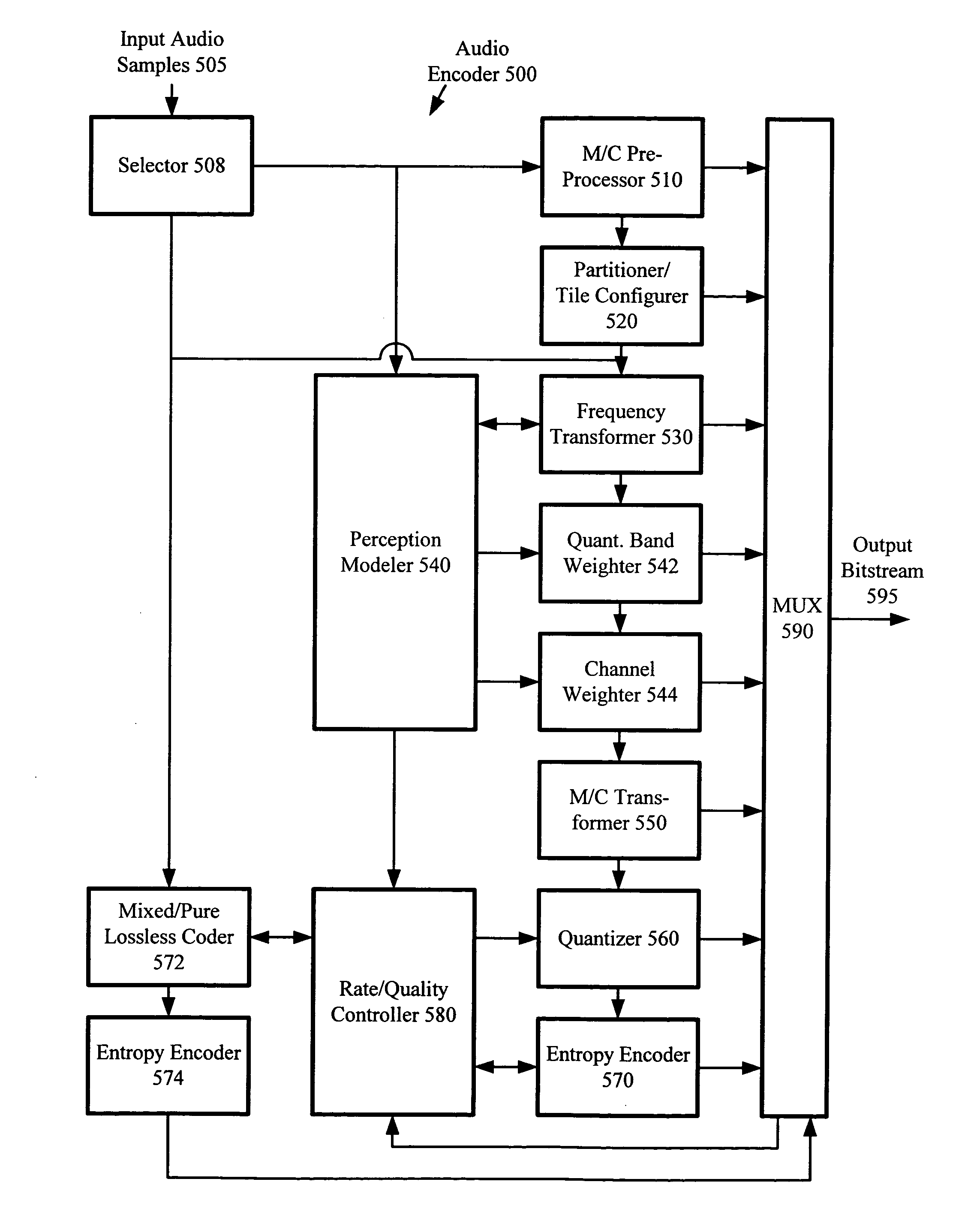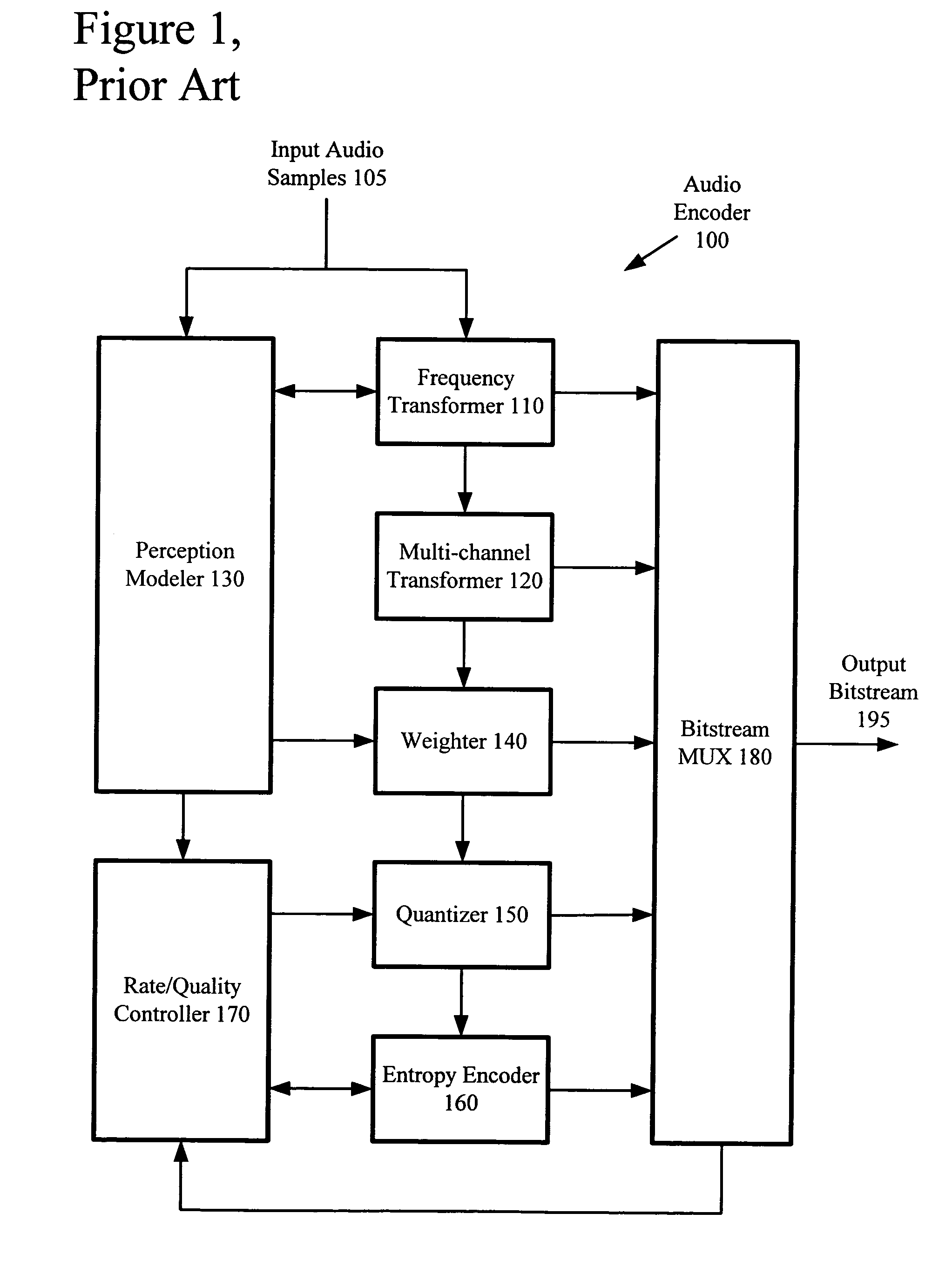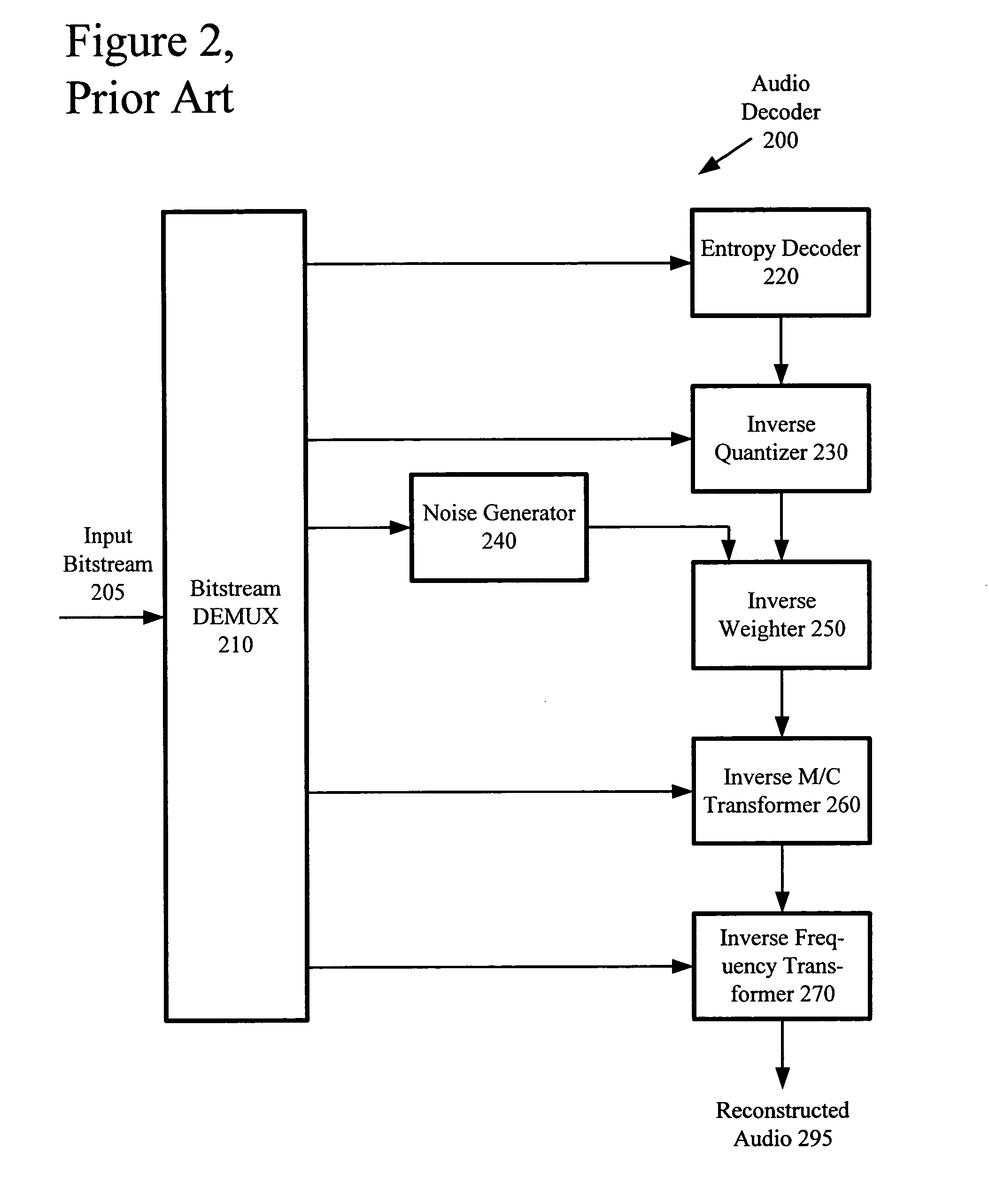Multi-pass variable bitrate media encoding
a variable bitrate and media encoding technology, applied in the field of media control strategies, can solve the problems of high bitrate of high-quality audio information such as cd audio, large amount of computer storage and transmission capacity, and many computers and computer networks lack the resources to process raw digital audio, so as to achieve constant or relatively constant vbr output quality, improve the overall listening experience, and high quality
- Summary
- Abstract
- Description
- Claims
- Application Information
AI Technical Summary
Benefits of technology
Problems solved by technology
Method used
Image
Examples
Embodiment Construction
An audio encoder uses a multi-pass VBR control strategy in encoding audio information. The audio encoder adjusts quantization of the audio information to satisfy constant or relatively constant quality requirements, while also satisfying a constraint on the overall size of the compressed audio data.
The audio encoder uses several techniques in the multi-pass VBR control strategy. While the techniques are typically described herein as part of a single, integrated system, the techniques can be applied separately in quality and / or rate control, potentially in combination with other rate control strategies.
The described embodiments focus on a control strategy with two passes. The techniques and tools of the present invention may also be applied in a control strategy with more passes. In a few cases, the techniques and tools may be applied in a control strategy with a single pass.
In alternative embodiments, another type of audio processing tool implements one or more of the techniq...
PUM
 Login to View More
Login to View More Abstract
Description
Claims
Application Information
 Login to View More
Login to View More - R&D
- Intellectual Property
- Life Sciences
- Materials
- Tech Scout
- Unparalleled Data Quality
- Higher Quality Content
- 60% Fewer Hallucinations
Browse by: Latest US Patents, China's latest patents, Technical Efficacy Thesaurus, Application Domain, Technology Topic, Popular Technical Reports.
© 2025 PatSnap. All rights reserved.Legal|Privacy policy|Modern Slavery Act Transparency Statement|Sitemap|About US| Contact US: help@patsnap.com



